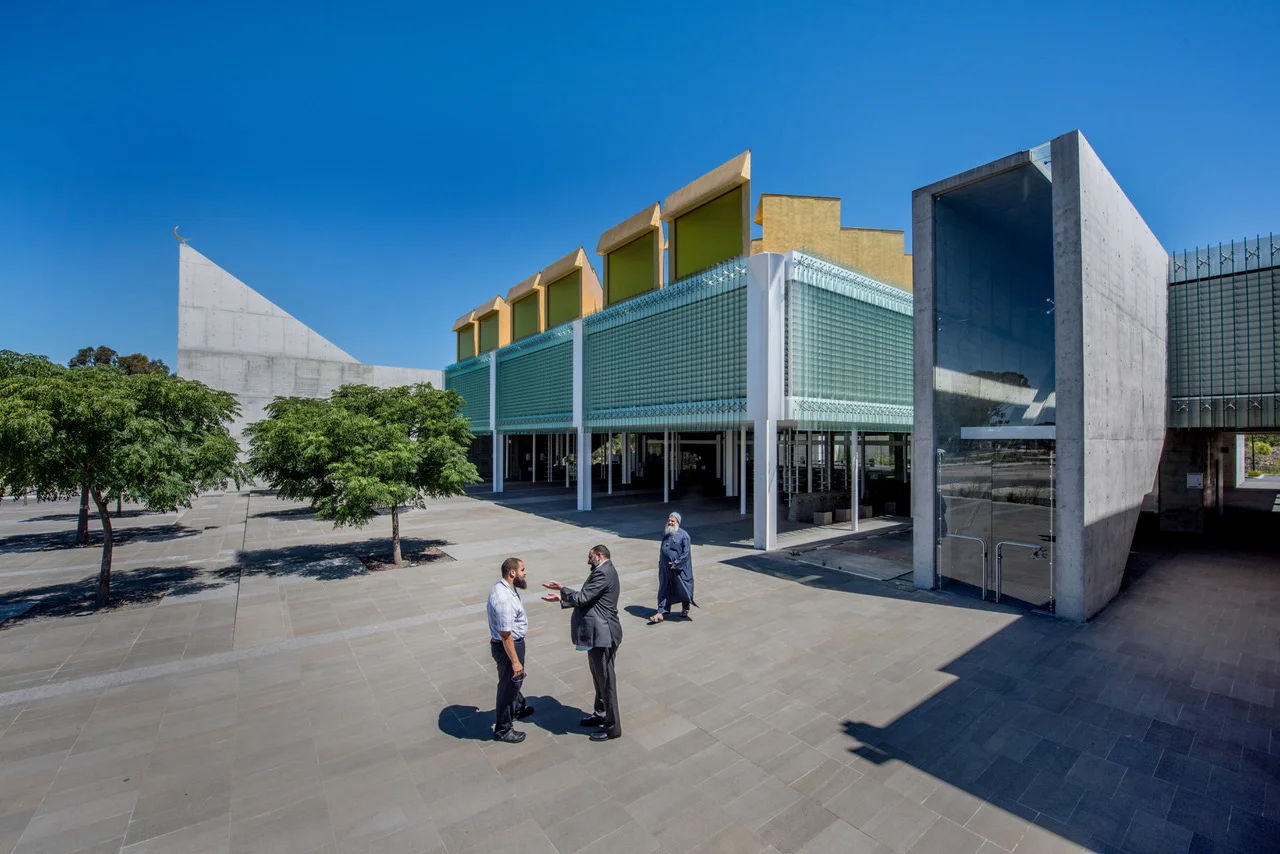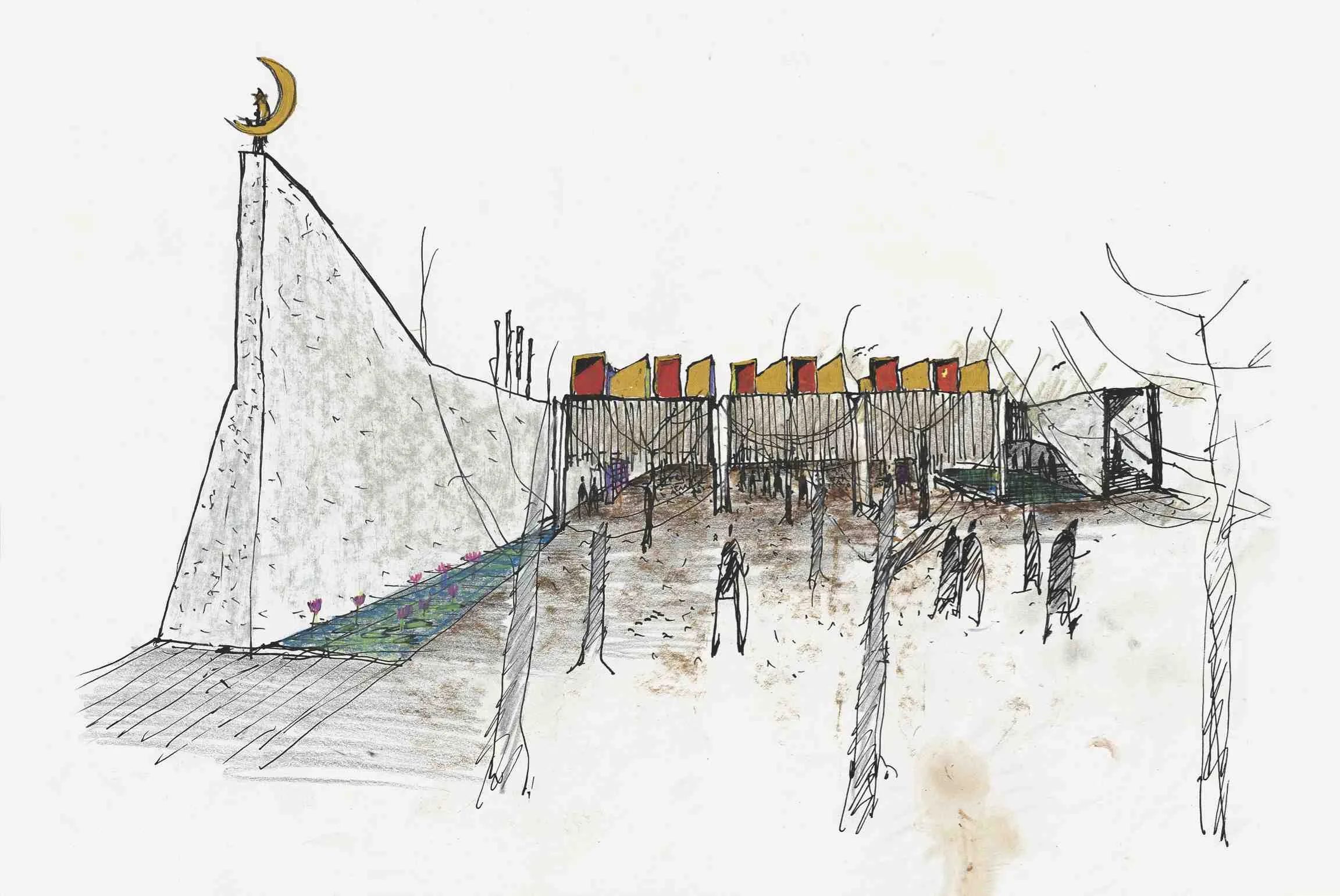Australian Islamic Centre, Hobsons Bay, Melbourne, Victoria, Australia : 2004 - ongoing : Glenn Murcutt and Hakan Elevli architects in association
(Text : Piers Taylor 2017 from an article published in the Architectural Review, London)
Murcutt was approached in 2004 by the Islamic community in Newport, Melbourne, who had become aware he had been Chair of the jury for the Aga Kahn Awards for Islamic Architecture. Designed in collaboration with local Islamic architect Hakan Elevli, the Mosque represents a relative departure for Murcutt in many ways. This is partly because of its size (it is much bigger than any other building Murcutt has delivered) but mainly because of the rich cultural context within which he has had to work, and the resultant complex program of a large mosque with sophisticated nuances between various spaces that need to be reconciled and allowed to change over time.
The site is also a departure for Murcutt. Neither rural nor truly urban, it is instead in Hobsons Bay, a low rise, open grained residential suburb of Melbourne, 10 kilometres or so from its centre. Most of Murcutt’s buildings are set up to mediate between aspects of landscape and their human occupation, and in many ways the mosque is no different. Unusually for a Mosque, this project has instead been designed as a continuous piece of landscape that begins at the street edge some distance from the building. If many of Murcutt’s rural buildings have adapted the language of the rural shed, this suburban building feels as if it has adapted the language of the large suburban shed, and from the street presents an ambiguity not typical in a place of worship.
Curiously, the Mosque has no ‘fourth’ wall; instead of entering into a private courtyard through a small opening in a large wall, the public side of the building has a transparent, glazed façade at ground level that pivots and almost disappears, allowing visitors to filter seamlessly in from the Willow Bottlebrush and Olive trees that have been planted to shade the external spaces. The Mosque intentionally presents an open and encompassing face to its community, inviting people to enter who may not be Muslim.
There are key Murcutt hallmarks here though: the sculptural, blade like concrete wall that deals with arrival and acts to draw visitors into the building. This takes the place of the traditional minaret, which Murcutt persuaded his client to abandon. The Mosque also embodies his working themes of light and ventilation. The roof lanterns are designed to face variously north, south, east and west, with alternatively coloured glass that moderates the light from each direction and changes the character of the main worship space accordingly from morning to afternoon. These lanterns, which dominate the external appearance of the building, also, with their intense coloured light, provide the dominant experience of the main double height worship space. The other Murcutt hallmarks are the external louvres providing cross ventilation, and also the expressive rainwater hoppers.
The Mosque is not quite finished, and the key experience that it needs to offer is difficult to read yet : that of atmosphere. This is perhaps the biggest challenge for Murcutt, and the biggest departure from his previous buildings where the making of an architecture from the rudimentary has served Murcutt so well. Here, he has had no choice but to deal with that foremost of architectural preserves: a spatial experience designed to imbue visitors with reverence. It is refreshing to see him grappling with the issues presented in this project: the suburban site, the large scale and the cultural context, and offers, hopefully, a taste of things to come as Murcutt enters into another busy phase in his 81styear, having rediscovered his customary zeal for work. Currently working harder ever, Murcutt is undergoing something of a late career renaissance. Although he refuses to work outside Australia, with the mosque’s central themes of bridge building between western and Islamic cultures, Murcutt shows how world politics can be addressed from the suburbs.
Text : Piers Taylor. Perspective : Glenn Murcutt . Photographs : Anthony Browell











